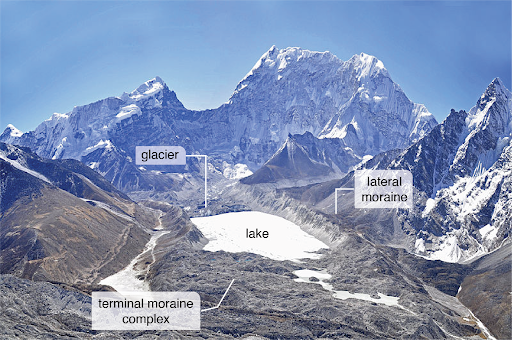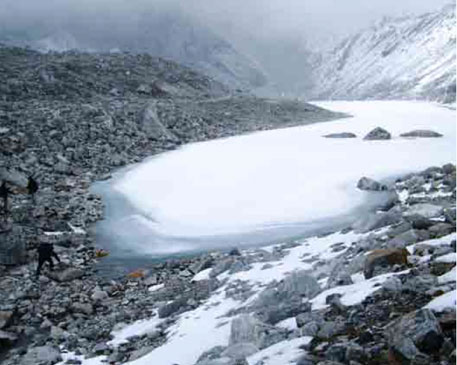
The recent devastation in the Chamoli district of Uttarakhand has once again warned us about the dangers of global warming. Such incidents occur in the Himalayas due to the breaking of glaciers or the breaking of walls of lakes formed by glaciers. The glaciers are continuously melting due to global warming, leading to creation of new lakes in the higher reaches of the Himalayas. There is also an increased risk due the breaking up or melting of the glaciers from the rising temperatures which can cause severe havoc in the lowlands.
The researchers from The State Center for Climate Change under the State Council for Science Technology & Environment of the Government of Himachal Pradesh which is constantly studying these lakes have found that about 800 lakes have been formed in the high-altitude Himalayas of Himachal Pradesh due to the rise in temperatures.
The large glacier lakes in the Himalayan region are worrisome as the increased size of these lakes due to global warming also increases the risk of glacial lake outburst floods (GLOF). The increase in size of glacier lakes and the sudden breakdown of such lakes due to GLOF results in the massive flow of water and debris in the lower regions.
Researchers associated with this center say that the lakes formed in this region of the Himalayas are of different sizes, with more than 550 lakes being the most vulnerable to Himachal Pradesh. The melting of glaciers has intensified in recent years due to the rise in temperature, increasing the size of artificial lakes. Around 800 lakes have been formed in the high altitude Himalayas of Himachal Pradesh due to the rise in temperatures say the researchers.
The researchers further say that in the last few years more than 100 new lakes have been formed on the Sutlej, Chenab, Ravi and Beas basins. In the year 2014, there were 391 glacier lakes in Sutlej Valley, whose number has increased to 500. Similarly, about 120 glacier lakes are formed in Chenab Valley, 100 in Beas and 50 in Ravi.
The melting of glaciers is increasing the amount of water in these lakes. The researchers have taken the help of satellites to monitor the glaciers responsible for the formation and size of these lakes.

K.K. Pant, Secretary, Environment, Science and Technology in the Government of Himachal Pradesh Pant says that these lakes and glaciers are monitored throughout the year, whose annual report is shared with all concerned departments and agencies.
According to a study conducted shortly before the Chamoli incident, the scientists of the Divecha Center for Climate Change of the Indian Institute of Science, Bangalore, found that global warming is causing widespread effects on glaciers in the Himalayan region. The study cautioned that 55 percent of the glaciers in the Sutlej River Valley may be lost by 2050 due to extreme climate change events.
Another study conducted by the scientists of GB Pant National Institute of Himalayan Environment and Sustainable Development at Almora has revealed that Chatorangi, the tributary of Gangotri, has shrunk by more than 1,172 meters in about 27 years. The total area of Chaturangi glacier has shrunk by 0.626 square kilometers, and 0.139 cubic kilometers of snow has also decreased. Researchers say that this glacier is shrinking at a rate of 22.84 meters per year.
Scientists believe that given the rate at which climate change is taking place, it can be said that the melting of glaciers in the Himalayan region will further increase the formation of such lakes. The formation of these lakes, and the increase in their size, also increases the risk of GLOFs, they say.
